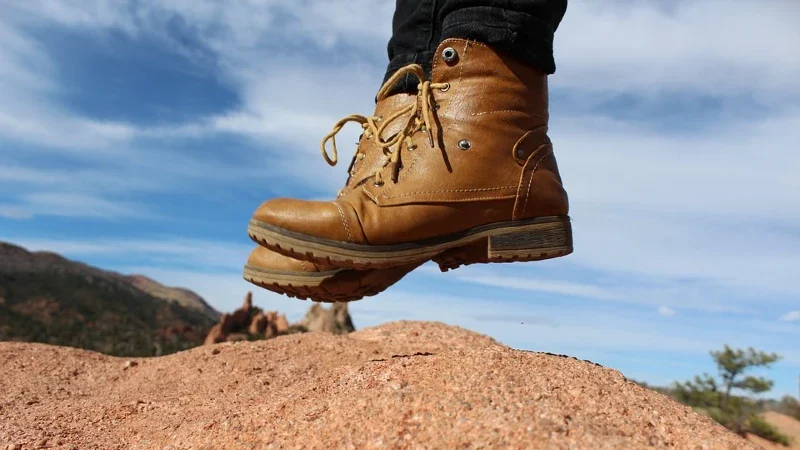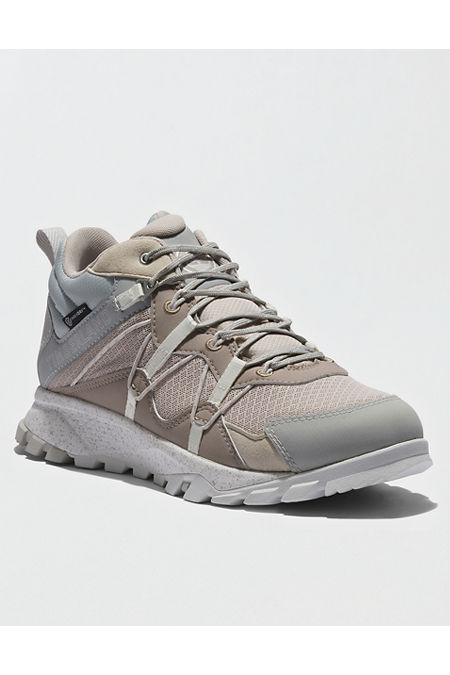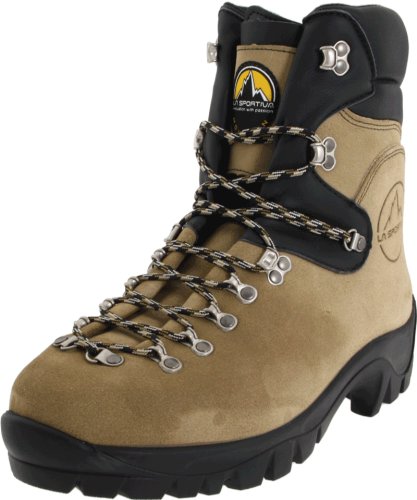A great hike begins with a great pair of hiking boots. With the dizzying array of options out there, it’s easy to get overwhelmed by the selection. Here are some tips to consider when you buy your first pair of hiking boots:
- Consider your purpose for your boots. What kind of terrain will you be navigating? How much weight will you be packing? How far will you be trekking? These are all things you need to think about when deciding what kind of boots to buy.
- Think outside the shoe box and don’t just look at outdoors retailers. A lot of sports and sneaker retailers have huge selections of boots in stock, and for lower prices than you might expect.
- Once you have established generally what you’re looking for, pick one of the following styles that best suits your needs:
In This Post
Types of Hiking Boots
Light Hiking Shoes
These are your running shoes’ beefed-up cousins. They are lightweight, offer minimal ankle support, and feature some traction to stabilize you on shorter excursions. Their ultra-light feel may appeal to long-distance backpackers, too. Hiking shoes can handle minimal changes in elevation and are perfect for mild terrain and well-maintained trails. These shoes will keep you comfortable while you are carrying light loads and will not take very long to break in.
Light Hiking Boots
These boots are designed with slightly more support than trail shoes, but without much additional bulk. Ideal for staying on the beaten path or traversing moderate terrain, these boots will give you the support you need to carry midweight to heavy packs. They can also handle longer treks and moderate changes in elevation.
Mountaineering Boots
If you’re gearing up to brave rugged terrain, glaciers, or snow, mountaineering boots can tackle the most unforgiving turf and withstand anything that Mother Nature throws your way. Different styles provide varying degrees of insulation to keep you warm in snow and ice.
Backpacking Boots
Backpacking boots have stiff soles, enhanced cushioning, and high-cuts that offer sturdy ankle support. They are great for carrying heavy weight, on multiday trips, over rough and tough terrain. They can withstand greater changes in elevation and variable weather conditions..
The Guide To Buying
Hiking Boot Materials
The material of your boot regulates the temperature of your feet and works to keep you warm or cool. These are the most popular materials:
- Synthetic materials are quick-drying, easy to break in, and will keep you light on your feet. One drawback, though, is that they tend to be less water-resistant.
- Split-grain leather is made of half leather and half synthetic materials. Although split-grain leather allows for more air to circulate than full-grain leather, this hybrid will not be as water-resistant or durable.
- Full-grain leather is durable, offers excellent water resistance, and is the best choice for long trips, heavy weight, and rugged turf. This material is heavy and less breathable than its counterparts. If your boots are made of full-grain leather, allow ample time to break these kicks in before going out on an extended hike. Some boots, like Timberlands, use a combination of all three to complete the product.
Low-Cut, Mid-Cut, or High-Cut Boots
Low-cut offers the most freedom of movement, but the least protection against ankle injuries. This makes low-cut perfect for staying on the beaten path. Mid-cut offers slightly more balance and support. High-cut may be more restrictive, but it is best when you need ample ankle support and help with balance. So if you’re going rogue and venturing off the trail, high-cut boots are your new best friends.
Proper Fit Is Everything
If you know what socks you will be wearing on your hike, bring them with you when you go shopping to wear under the boots that you try on. Or else buy boots and socks at the same time. This will allow you to coordinate toe seams and thickness to keep pressure points comfortable.
There should be sufficient padding on the tongue of your boot, but it should be rigid enough to keep laces from digging into the tops of your feet. The general rule is that stiffer soles call for more padding.
Interior ankle padding is important for securing your heels, stabilizing your ankles, and supporting your movements without chafing.
Heels should be anchored in place and toes shouldn’t crash into the front of the boot when you’re going downhill. You need to have enough room to wiggle your toes, but not have that much more space beyond that.
Choose The Right Width
If the boot painfully squeezes your toes or the sides or your foot, then it’s too narrow and you should check out a wider fit. On the other hand, your boot should not be so wide that your foot slides all around inside.
The number one cause of blisters while hiking is a heel that is too loose.
Break Your Boots In Before They Break You
This is the “check yourself before you wreck yourself” rule.
Whatever boots you decide on, don’t take them straight from the box to the trail. Break them in first before your trip by wearing them around the house, to run errands, wherever. The more time you log in your boots before your hike, the more comfortable they will be when you finally hit the trail.
Can’t afford hiking boots? Buy boots, now pay later!




